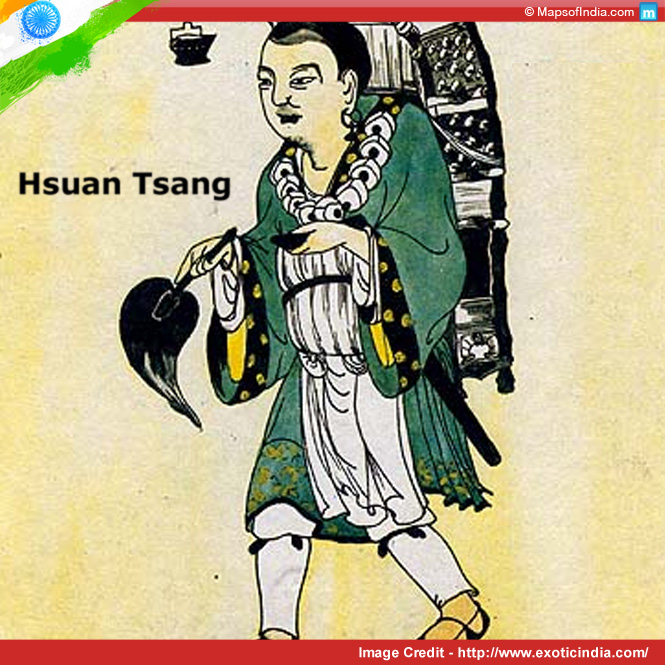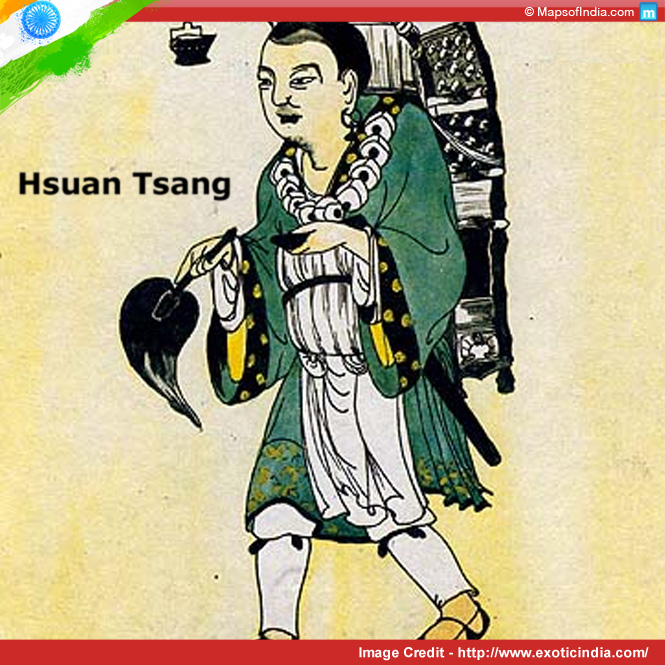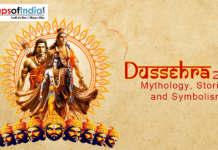If you have ever gone through the ancient history of India, you must have come across the name of the Chinese Buddhist monk Hsuan Tsang (var. Hiuen Tsiang) who visited India through the Silk Route between AD 627-643. He was a great traveler, scholar and translator. Till date his work on India is very significant.
Hsuan Tsang was born in AD 602 at present day’s Henan province, China. Since childhood Hsuan Tsang used to read Chinese religious books and traveled all across China in search of good books on Buddhism. After finding some contradictions in the text books on Buddhism, he decided to travel to India in search of true explanations, as India was the birthplace of Buddha. After reaching India, he spent 17 years of his life here. During his entire stay Hsuan Tsang was traveling, exploring, imbibing and learning. Hsuan Tsang recorded his travel details in the Chinese text the Great Tang Records on the Western Regions.
Hsuan Tsang left Ssu-ch’uan without a travel permit in 627. His left this place very secretively as it was against law to travel abroad in China. Though he was on the main route but after his experience at first outpost where Hsuan Tsang was stopped he made a detour. Now he was into a place where there were no signs of life. All along his way, Hsuan Tsang faced many challenges and crossed deserts and mountains, passed through the central Asiatic regions of Turfan, Karashahr, Tashkent, Samarkand, and Bactria. But this didn’t stop him from visiting India. After traveling about 34 kingdoms he finally entered India in 631 through Hindu Kush. He spent near about two years in northwest India and then went to Ganges region for visiting sacred Buddhist place. His travel included Kapilavastu (birthplace of Buddha), Benares; Sarnath (places where Budhha delivered lectures), Bodhgaya (Buddha accomplished Nirvana at this place) and then to Nalanda (Buddhist learning center in India). For 15 months Hsuan Tsang studied at Nalanda to learn Sanskrit. He even studied Indian philosophy, grammar and logic.
He was a great scholar and King Harsa of Northern India came to know about him while he was going back to his country. The king made his travel back to China much easier. Hsuan Tsang left India in 643 and reached Ch’ang-an in 645. Back home he was offered a ministerial position but he refused it, as he wanted to complete his religious work. He started translating Sanskrit texts that he brought from India and successfully completed the translation of more than 600 Buddhist texts. Hsuan Tsang’s translations contained some of the most important Mahayana writings.
All through his journey, he kept a journal of his exceptional travel, observations and experiences that later known as the Hsi-yü Chi or Great Tang Records on the Western Regions. At present, this is a single written record of conditions of India and other Western countries at that time. Hsuan Tsang was indeed a great traveler and scholar whose travel to India is still helping historians to find out many answers about Indian civilization then.





